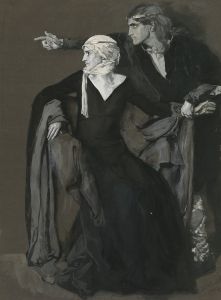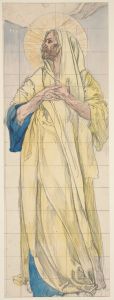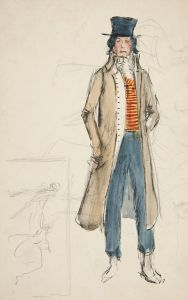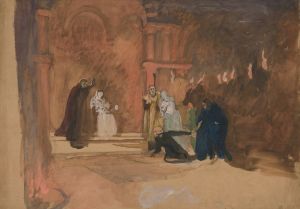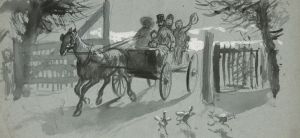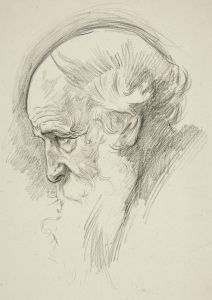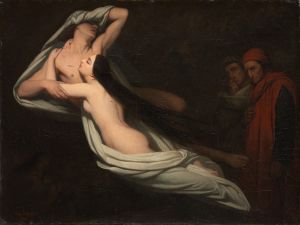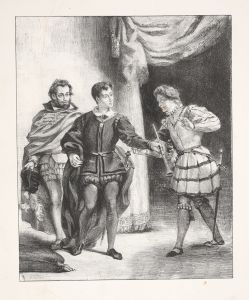
Troilus and Cressida; Before Agamemnon’s Tent
A hand-painted replica of Edwin Austin Abbey’s masterpiece Troilus and Cressida; Before Agamemnon’s Tent, meticulously crafted by professional artists to capture the true essence of the original. Each piece is created with museum-quality canvas and rare mineral pigments, carefully painted by experienced artists with delicate brushstrokes and rich, layered colors to perfectly recreate the texture of the original artwork. Unlike machine-printed reproductions, this hand-painted version brings the painting to life, infused with the artist’s emotions and skill in every stroke. Whether for personal collection or home decoration, it instantly elevates the artistic atmosphere of any space.
Edwin Austin Abbey's painting "Troilus and Cressida; Before Agamemnon’s Tent" is a notable work that captures a scene from William Shakespeare's play "Troilus and Cressida." Abbey, an American artist known for his illustrations and paintings, created this piece as part of his broader interest in Shakespearean subjects. The painting is a representation of a moment from the play, which is set during the Trojan War and explores themes of love, betrayal, and the futility of war.
Abbey was born in 1852 in Philadelphia and developed a keen interest in art from a young age. He studied at the Pennsylvania Academy of the Fine Arts and later moved to England, where he became associated with the Pre-Raphaelite Brotherhood and other artists who were inspired by literature and history. Abbey's work often focused on literary themes, and he became particularly known for his illustrations of Shakespearean plays.
"Troilus and Cressida" is one of Shakespeare's lesser-performed plays, categorized as a tragedy, history, or problem play due to its complex themes and tone. The story is set against the backdrop of the Trojan War and follows the doomed romance between Troilus, a Trojan prince, and Cressida, the daughter of a Trojan priest who defects to the Greeks. The play also delves into the politics and conflicts among the Greek and Trojan leaders, including figures like Agamemnon, Achilles, and Hector.
In Abbey's painting, the scene is set before Agamemnon's tent, capturing the tension and drama of the play. The composition likely includes key characters from the play, depicted with Abbey's characteristic attention to historical detail and dramatic expression. Abbey's work is known for its rich color palette and intricate details, which bring the historical and literary subjects to life.
Abbey's interest in Shakespearean themes was part of a broader trend during the late 19th and early 20th centuries, when many artists and writers were inspired by the Bard's works. His paintings and illustrations contributed to the visual culture surrounding Shakespeare's plays, offering audiences a way to engage with the stories beyond the written word or stage performances.
"Troilus and Cressida; Before Agamemnon’s Tent" is an example of Abbey's skill in translating complex literary themes into visual art. While specific details about the painting's current location or exhibition history may not be widely documented, Abbey's work continues to be appreciated for its artistic merit and contribution to the interpretation of Shakespearean literature.
Overall, Edwin Austin Abbey's painting serves as a testament to the enduring influence of Shakespeare's works and the ability of visual art to capture and interpret the timeless themes of love, conflict, and human nature.





